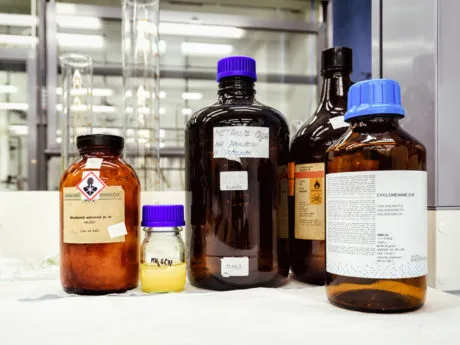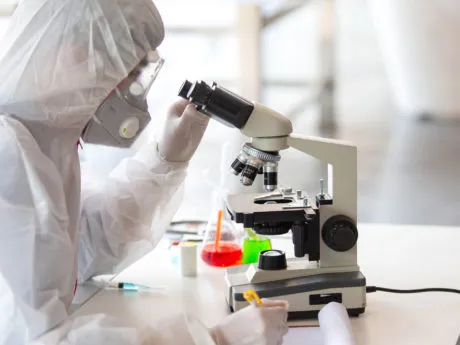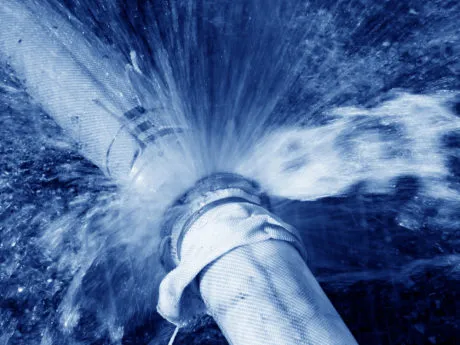Experts' advices
I work in A HOSPITAL
FORMALDEHYDE (OR FORMOL)


BIOLOGICAL FLUIDS
Some waste comes from disinfection or cleaning processes with bleach, used for example after potential viral exposure (e.g. Ebola). To ensure safe solidification of these biological fluids, the absorbent must be neutral and compatible with these products.
OTHER SPILLS
- Chemical hazard: irritant, corrosive, reactive to water and air, explosive, oxidizing or flammable.
- Toxic fumes that may be inhaled or cause irritation.
- Damage to equipment, material, structure.
- Discharges into the sewage system that contaminates the environment.

FREQUENTLY ASKED QUESTIONS
This procedure applies in the event of a minor spill that can be managed internally :
- Inform people in the vicinity of the hazard and evacuate them. Then find the right protective equipment to protect yourself. In the event of a large concentrated formaldehyde spill, a suitable breathing apparatus will be required.
- Make a dam around the spill with TRIVOREX® neutralizing absorbent.
- Sprinkle TRIVOREX® neutralizing absorbent over the spill and wait until the formaldehyde is completely polymerized.
- Collect the residue and remove it according to the regulations in force.
Formaldehyde is a highly flammable reagent that can cause irritation to the skin, eyes, as well as allergies and breathing difficulties (because it is highly volatile). It is also classified as a carcinogenic and mutagenic molecule.
- Protect yourself and your employees with a breathing apparatus and evacuate the rest of the people present. Do not forget that formaldehyde vapours can irritate the respiratory system and skin that is exposed.
- If immediate intervention is possible, use TRIVOREX® neutralizing absorbent which will reduce vapours and absorb (and polymerize) the spill to enable you to pick up the residue more easily.
All biological waste and fluids must be gelled and disinfected (often with 0.5% bleach) before being disposed of. In the event of a suspected viral risk, bio-cleaning should be carried out, followed by bleach disinfection of the premises and equipment and isolation of waste (e.g. procedure in the event of Ebola virus suspicion).
Residues from these disinfection procedures should be absorbed/gelled with products compatible with residual disinfectants and/or bleach, such as TRIVOREX® neutralizing absorbent.
In accordance with the recommendations of the French Ministry of the Interior, it is strongly recommended to use the minimum amount of water possible during cleaning and to follow the protocol in force in agreement with the local authorities.
This procedure applies in the event of a minor spill that can be managed internally :
- Inform people in the vicinity of the hazard. Then find the right equipment to protect you and secure the area.
- Make a dam around the spill with TRIVOREX® neutralizing absorbent (compatible with all acids, bases, solvents, oxidants, etc.). It will reduce irritant vapours, neutralize the spill and allow you to pick up the residue more easily.
- Put the neutralizing absorbent on the spill and wait a few minutes for complete absorption of the liquid.
- Collect the residue and treat it in accordance with national regulations in force.